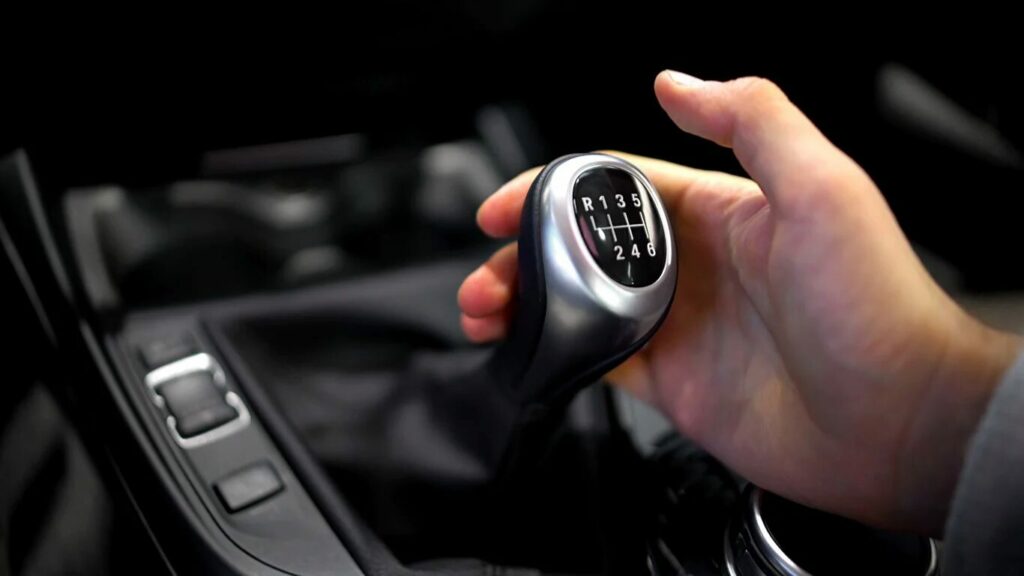For your car to be able to get from point A to point B without having to drag along in first gear, it needs a working transmission. The transmission allows the vehicle to change gears, so that the right amount of power goes to the wheels to drive in an efficient manner at a given speed.
The transmission does this by varying the gear ratio. In lower gears, this increases available power while reducing speed. Higher gears, on the other hand, reduce power and increase speed. This enables cars to distribute power and speed in the most efficient way for any given situation.
Although transmission is absolutely vital to the inner workings of any car, there is no general consensus regarding what kind of transmission is better, automatic or manual. It’s not an easy question to answer as both transmissions have their own unique advantages and disadvantages.
Related: What Goes Wrong with Your Car and When?
Many people grew up driving manual vehicles because at one time manual transmissions were more widely available than automatic transmission vehicles. Drivers who are accustomed to manual transmission may instinctively gravitate towards manual transmission vehicles because they are more familiar than automatic transmissions. However over the past decade, automatic transmission vehicles have become popular specially for those learning to drive.
So, before you make any decisions regarding which one should you go for, take a few moments and familiarize yourself with the benefits associated with the two different kinds of available transmission.
The Driving Differences
The most notable difference between an automatic and manual transmission is the degree of driver engagement. A manual transmission requires the driver to be engaged in shifting the gears, while an automatic transmission changes gears on behalf of the driver.
There is often a learning curve with a manual transmission, especially for new drivers. When driving a manual transmission vehicle, the driver is required to coordinate between the clutch, throttle, and gears in order to properly operate the car.
Related: 5 Cars That Were Ahead of Their Times
For an automatic transmission, the driver must simply put the vehicle in drive mode and the vehicle automatically coordinates between the clutch, throttle, and gears. The driver may therefore focus solely on maintaining the appropriate speed while staying alert on the road.
Automatic Transmission
Automatic transmissions have been increasingly popular for the past few years. Yet, despite their apparent popularity, automatic transmissions are not necessarily a better choice for many drivers. However, they do offer advantages over manual transmissions in several key areas. Such as:
- Easier to use: Compared to manual, automatic transmissions are much simpler and take drivers significantly less time to learn.
- Better for hilly areas: If you’re a less experienced driver, you may find that navigating steep inclines in a manual transmission is difficult, especially if you’re attempting to do so from a dead stop. Automatic transmissions take care of this issue, enabling your car to operate efficiently no matter how steep the hill might be.
- Greatly reduced risk of stalling: In manual transmission, there are chances of you accidentally stalling your vehicle right when the traffic light changes. This isn’t a problem for those driving automatic transmission, where stalling will only occur if there’s a mechanical problem in the vehicle.
- Easier to use in heavy traffic: In heavy traffic where a car isn’t able to get up to speed, manual transmission drivers need to constantly engage and disengage clutch, so repetitive starting and stopping becomes a hectic task. Automatic transmissions allow the driver to move through heavy traffic without having to do more than push a single pedal.
Related: When to Change Your Old Car?
Manual Transmission
For those drivers who prefer a more involved driving experience, they go for manual transmission. This simplest and oldest transmission form has many advantages such as:
- Less expensive to purchase: Manual transmission vehicles are generally cheaper than the automatic versions of the same model.
- Cheaper to maintain: Manual transmission cars require very little maintenance, and generally maintenance and repairs end up being significantly less costly than the automatic transmission. Be warned however, there is one thing that a manual has which the automatic doesn’t have to worry about is the clutch, and if the clutch goes out of order then you should get ready to spend money on repairs.
- Better fuel efficiency: Overall, manual transmission engines are less complex, they weigh less, and have more gears than automatics which results in getting more kilometers out of the fuel you burn than you would with an automatic. Manual transmissions have been known to save drivers up to 15% on their fuel costs.
- Better control: Automatic transmissions are built to respond to conditions as they are encountered, which doesn’t allow for drivers to either anticipate an oncoming condition, or to purposely select a lower gear for an added boost of power. Manual transmissions give drivers greater control over the vehicle.
- Push starting: One key advantage people prefer manuals over automatic is the fact that the car can be push started (dhakka) in case the battery is dead or self starter malfunctions. This can’t be done in cars with automatic transmission.
Conclusion
Automatic transmissions are easier to use and more comfortable for the driver, while manual transmission vehicles are less expensive and provide a more involved driving experience. However it’s never possible to declare one better over the other, as transmission choice is ultimately based on an individual driver’s preference.

A computer animation professional with over 23 years of industry experience having served in leading organizations, TV channels & production facilities in Pakistan. An avid car enthusiast and petrolhead with an affection to deliver quality content to help shape opinions. Formerly written for PakWheels as well as major publications including Dawn. Founder of CarSpiritPK.com



